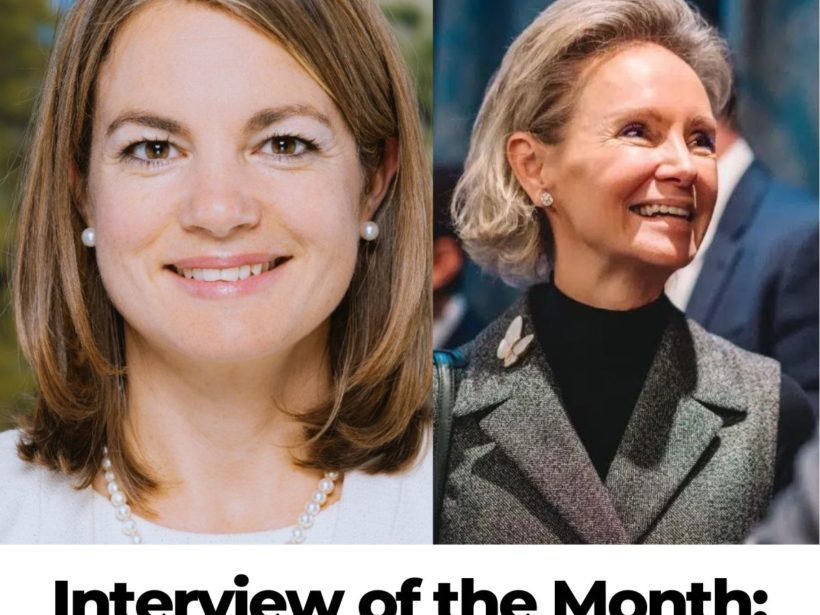
Overcoming Barriers to Scaling Impact
While there is increased interest and media attention for impact investments, it remains challenging for most investors to find and access solid opportunities. Patrick Elmer, the CEO of iGravity, plays a unique role in the impact space by both building investment solutions and by supporting other players in designing partnerships and financing instruments that drive capital to the SDGs. We sat down with Patrick to pick his brain about the biggest challenges and opportunities that currently exist in the impact space.
Most impact products are limited to qualified or professional investors, but we know that there are many retail investors who would love to access the impact space. What do you see as the key barriers for these investors?
It is unfortunate that these barriers exist, even with growing interest and media coverage on impact investing. Overall, there is still a limited flow of capital towards enterprises and investment products that have impact goals, such as improving livelihoods or protecting biodiversity. Retail investors cannot easily access these products mainly due to regulatory issues, given some of the features of impact investing like limited liquidity, exposure to emerging markets, and the lack of a longer track record. To be honest, it does sound anachronistic that only wealthy people, large asset owners, and managers can deploy capital for impact while “ordinary” investors looking to invest according to their values are mostly prevented from doing so. In my view, we need the regulatory environment to evolve to allow retail investors in, recognizing for example the 20-year positive track record and stability of microfinance investments. We also need more flexibility on portfolio management guidelines to allow exposure to instruments that are not readily marketable. Finally, with all the know-how and expertise we have available in Switzerland I hope we can also come up with innovative solutions to provide liquidity.
Let’s zoom in on some of the challenges you identified. Liquidity is on our minds at SFG as it was an issue raised consistently at Building Bridges. We know that many of the most impactful companies are not listed, so how do you approach the challenge of liquidity?
Liquidity and the lack of listing of high-impact enterprises is clearly a challenge, but this is also understandable to some extent. Listing requires a certain size to cover associated costs and comes with regulatory requirements. These are mostly for transparency and investor protection, and assuming there are substantial investors’ interests in trading the security. It is also logical that for many investors, liquidity in their portfolios matters. However, I struggle to understand why many banks insist on daily liquidity for 100% of their client’s portfolio, as the nature of impact investing is about providing capital that allows enterprises to work and grow over a certain period of time.
At iGravity we work hard to make impact investments more accessible. Recognizing investors’ needs for liquidity and the rather “illiquid” nature of impact investments, we have come up with our own solution, a proprietary Impact Investment Index in the form of an investable portfolio that includes 20 of the best opportunities across asset classes and SDGs where we can provide monthly liquidity. Investments are selected based on both financial and impact considerations. Additionally, we are also active in creating additional liquidity by structuring private debt solutions into transferable securities.
Another issue we are hearing consistently from entrepreneurs, start-ups, and growing businesses who are raising capital is akin to a “goldilocks syndrome” where they feel they are either too big or too small to attract capital. How do you view this ticket size issue? And beyond individual companies, the small product universe?
First of all, from the enterprise perspective, it is true that up to a certain size they are partially served by local capital markets. This is notwithstanding all the associated challenges – like the high cost of capital, lengthy approval processes, and heavy collateral requirements. Once these enterprises grow in size, they get on the radar of international impact investors. However, there is this “missing middle” which includes relatively solid companies that are not able to meet the requirements of local banks and are still too small to justify due diligence by an international impact investor, who might find the cost unfeasible below a certain ticket size.
From the investor perspective, it comes back to the challenge of accessing impact investments. For most investors it starts with the question of where to find good opportunities, as there is no Bloomberg for impact nor a universally accepted rating of what constitutes an impact investment. Then, there is the issue of limited liquidity as I’ve just explained. Most investments require a minimum ticket of USD 250-500 thousand which is often too high for private investors. If you add to this the fact that impact investing is still a nascent space and there are relatively few products with a longer track record and with a certain volume, you will see how access is a challenge!
On our side, this missing middle is precisely where we are concentrating our efforts, starting from the selection, and due diligence but also in the structuring of investable solutions. These often come with some blended features, where some of the partners are either providing de-risking, covering execution costs, or offering TA funding. We are for example just about to launch our first bond in partnership with Charm Impact financing SMEs in Sub Saharan Africa bringing renewable energy solutions to underserved populations.
You also mentioned measurement, how are you approaching impact measurement practically at a time when we are still lacking standardization?
Impact measurement is a key and transversal topic in everything we do. On the consulting side, we usually start with identifying the context-specific development challenges, identifying and mapping enterprises that generate positive outcomes, understanding from them what type of financial and non-financial assistance they need, and finally matching them with potential investors. When investor requirements match the terms offered to the selected enterprises, we connect them through an adequate structure.
For our work on the investment side, there is no single tool addressing all Impact Measurement & Management (IMM) needs across the investment process, though there are a few complementary frameworks and standards gaining traction. Together, these frameworks and standards provide a toolbox for investors which is customizable to their needs while still aligned internationally. We believe that we must contribute to standardization, rather than wait for it. We need to make the effort to align our approach with international standards. In practical terms, we work with the data provided by investees in the shorter term and work with the investees to improve the alignment of reporting standards in the longer term.
We are at an interesting time in finance, impact is on everyone’s mind, but the fundamentals of the finance industry are not changing any time soon. How are you balancing your investment process to balance the traditional financial and risk dimensions with the newer impact considerations?
You are absolutely right, it would be naïve to believe that this will change anytime soon, especially since most people charged with managing money are still evaluated only by the financial performance they generate. However, it is important to acknowledge that there isn’t one homogenous block of investors but rather different types of investors each one with their own set of preferences when it comes to risk/return, impact and liquidity. On our side, we have built an investment process that balances financial as well as impact considerations as well as integrated reporting including impact KPIs along with the financial performance. Investors’ preferences related to risk/return, liquidity and impact are the basis for us to define the investable universe. Once an opportunity passes our initial impact screening, we build peer groups of similar opportunities to assess and grade each investment impact across three levels and nine dimensions to inform the investment decision. So, we assess the strengths and weaknesses of a given product compared to the universe. Generally, we do not compare products to categorically judge one product as more or less impactful than others given the multifaceted dimensions of development. We prefer to intelligently inform the investment process and decision, then monitor and report regularly on selected KPIs.
What role do you see non-traditional financial actors playing in impact investing, for example philanthropists and foundations, governments, or international organizations?
On our consulting side, we work a lot with development-oriented organizations. Many of them are rightly asking themselves how they can work more closely with both the private sector and institutional investors to mobilize more finance to support high-impact organizations with innovative business models. There are different roles these non-traditional finance actors can play, depending on their expertise and strategy and I will share some concrete examples from our work at iGravity.
Some development organizations work directly with and finance high-impact organizations, before financial investors come into the picture, taking the role of “impact-first investors”. Expo 2020 Dubai is supporting global innovators anywhere in the world through grant funding to build and scale their models and become investment-ready. Swiss Church Aid is directly investing its own capital often as the first external investor in SMEs in Uganda and Senegal that improve the livelihoods of rural communities. The Swiss Agency for Development and Cooperation (SDC), the Medicor Foundation, and the Jacobs Foundation provide impact-linked finance to high-impact enterprises and directly rewards them for positive outcomes generated through their business activities.
Other development partners aim to utilize their thematic expertise, credibility, and networks to design investable impact products and mobilize investors’ capital towards some of the world’s biggest challenges. We have, for instance, assisted Habitat for Humanity in conducting a feasibility study for an affordable housing follow-on fund to MicroBuild and are partnering with the Danish Refugee Council (DRC) to launch very soon a Refugee Investment Fund (RIF).
Some actors work on a more systemic level, promoting and scaling innovations and building new partnerships. SECO, the Swiss Secretariat for Economic Affairs, just announced the creation of the SDG Impact Finance Initiative to incubate and scale innovative financial products that mobilize capital toward the global south. As another example, the SDG Lab wants to promote larger cross-sectoral collaboration and aims specifically at mobilizing the international community in Geneva on issues related to channeling private capital for the SDGs.



